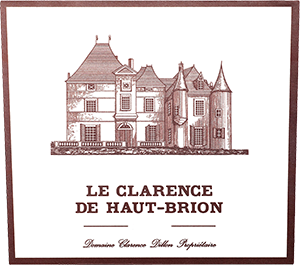| Region | |
|---|---|
| Subregion | France > Bordeaux > Left Bank > Pessac-Léognan |
| Colour | Red |
| Type | Still |

The second wine, the 2009 Le Clarence de Haut-Brion, is almost as large a cuvee as the grand vin. This 7,000-case cuvee is a blend of 46% Merlot, 39% Cabernet Sauvignon and the rest small quantities of Petit Verdot and Cabernet Franc. Once again the burning ember/scorched earth characteristic that often comes from Haut-Brion is found in the second wine, along with more kirsch and cassis, fewer nuances and less complexity than its bigger sibling. The wine is full-bodied with the minerality offered by this terroir as well as plenty of sweet tannins. This is the finest second wine Haut-Brion has produced since the astonishing 1989 Bahans-Haut-Brion. Enjoy it over the next two decades. Drink: 2012-2032
This is very, very Haut-Brion. Perhaps this second wine is like the gran vin in 1995? Full body, with rich ripe tannins, with a silky texture. It is dense and powerful. Long and rich. Better in 2016. Best second wine of Haut-Brion ever? It has just about everything Haut-Brion has in an excellent year like this. Try in 2019
The renamed second wine of Haut-Brion that was once called Bahans. Deeper, less blue colour than the Chapelle de La Mission. Very subtle nose that pulls you in but doesn't broadcast much. Pretty firm tannins. Really quite severe at this point. Very different from the buxom norm of this vintage. Very dense indeed. This will need a long, long time. Pretty ambitious.…Date tasted 2nd April 2010. Drink 2020-2032.
Deep velvety purple red, rich satiny-smooth, polished plummy ripe fruits, distinctive flavours combining vigour, finesse and seductive charm. Drink 2015-25.
The second wine, which used to be called Bahans Haut-Brion, is now Le Clarence Haut-Brion. The 2009 is a 7,000-case cuvee made of 46% Merlot, 39% Cabernet Sauvignon, and the rest Cabernet Franc and a tiny dosage of Petit Verdot. The wine has a fabulous nose of incense, burning embers, forest floor, and black cherry liqueur. Fleshy, rich, full-bodied, but not over the top as the minerality and structure move in, this is a super-duper effort, and the greatest second wine made at Haut-Brion since the 1989 Bahans Haut-Brion. It should drink well for 20-25 years. (Tasted once.) Drink 2010-2035.
Robert Parker added an asterisk to this wine score to signify that it is a wine he considers has the finest potential of all the offerings he has ever tasted from this estate in nearly 32 years of barrel tasting samples in Bordeaux.
Tasted at the chateau. The erstwhile Bahans, this has a touch more depth and breadth on the aromatics compared to the La Chapelle de al Mission, blackberry, graphite, hints of cassis and mint. Nice definition. The palate is medium-bodied with fine tannins, notes of blackberry, graphite, a touch of tobacco leaf, a sprinkle of black pepper, leading to a masculine, quite tannic entry that grips the mouth. Very fine, but it will need more time than most Bahans of the past. Tasted April 2010.
Violets and berries on the nose, with just a whiff of cream and vanilla. Full-bodied, with ultrafine tannins and gorgeous fruit. Caressing, silky finish. The renamed second wine of Haut-Brion (used to be Bahans).